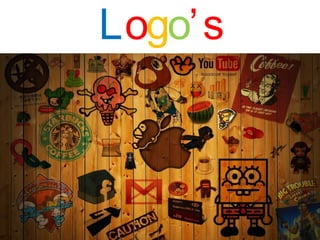This document provides information on logos, including their definition, history, types, and elements of effective logo design. It defines a logo as a graphical element that forms a trademark or brand along with its logotype. The history section outlines how logos have evolved from early inventions like seals and coins to the modern abstract logos of today. It also describes the types of logos such as symbols, word marks, letter marks, combination marks, and emblems. The document concludes with principles of effective logo design such as simplicity, memorability, timelessness, versatility, and appropriateness.


















































